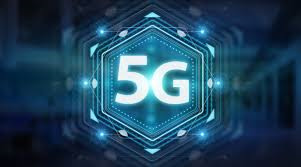What is 5G? - The next-generation wireless technology
5G is the fifth generation digital cellular network technology. The industry association 3GPP defines any system using "5G NR" (5G New Radio) software as "5G", a definition that came into general use by late 2018. The International Telecommunications Radio Communications sector (ITU-R) have defined three main uses for 5G. They are:
- Enhanced Mobile Broadband (eMBB) - uses 5G as a progression from 4G LTE mobile broadband services, with faster connections, higher throughput, and more capacity
- Ultra Reliable Low Latency Communications (URLLC) - refer to using the network for mission critical applications that requires uninterrupted and robust data exchange
- Massive Machine Type Communications (mMTC) - would be used to connect to a large number of low power, low cost devices, which have high scalability and increased battery lifetime, in a wide area.
5G Wireless Use Cases
Driverless Automobiles
Autonomous vehicle (AV) is one of the critical necessities of modern wireless infrastructure: It needs to connect people in motion with the computers they may be relying upon to save lives, with near-zero latency.
In a household with low-latency (the delay before a transfer of data begins following an instruction for its transfer) 5G connectivity, today's so-called "smart devices" that are essentially smartphone-class computers could be replaced with dumb terminals that get their instructions from nearby edge computing systems. Kitchen appliances, climate control systems, and more importantly, health monitors can all be made easier to produce and easier to control. The role played today by IoT hubs, which some manufacturers are producing today to cooperate alongside Wi-Fi routers, may in the future be played by 5G transmitters in the area, acting as service hubs for all the households in their coverage areas. In addition, machine-to-machine communications (M2M) enables scenarios where devices such as manufacturing robots can coordinate with one another for construction, assembly, and other tasks, under the collective guidance of an M2M hub at the 5G base station.
Health care
The availability of low-latency connectivity in rural areas would revolutionize critical care treatment for individuals nationwide. As recent trials in Mississippi are proving, connectivity at 5G levels enables caregivers in rural and remote areas to receive real-time instruction and support from the finest surgeons in the world, wherever they may be located.
To make the transition feasible in homes and businesses, telcos are looking to move customers into a 5G business track now, even before most true 5G services exist yet. More to the point, they're laying the "foundations" for technology tracks that can more easily be upgraded to 5G, once those 5G services do become available.
Information for this article has been taken from Wikipedia, and www.zdnet.com


